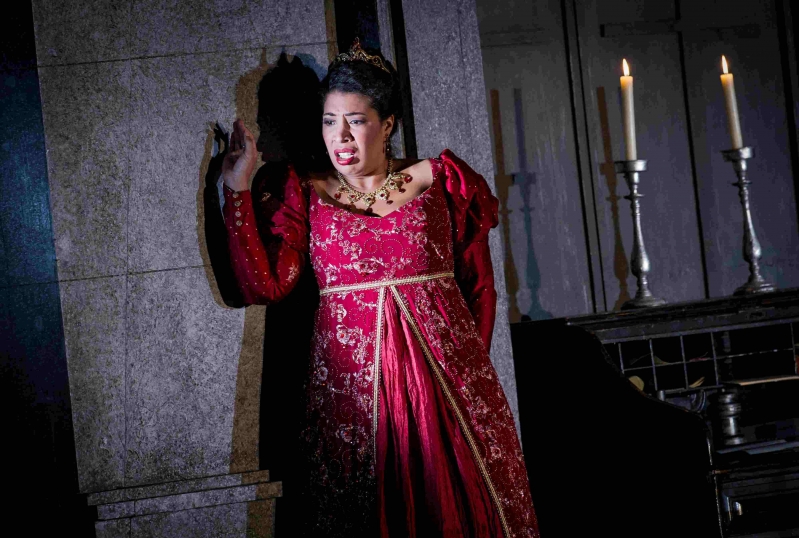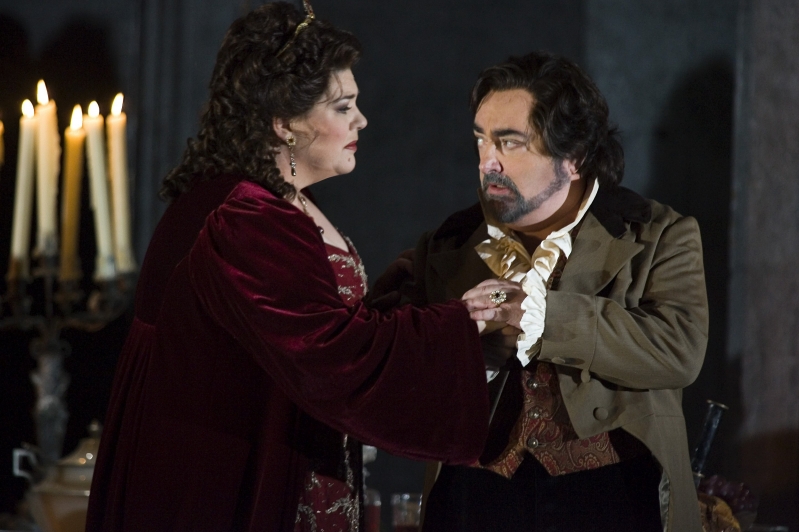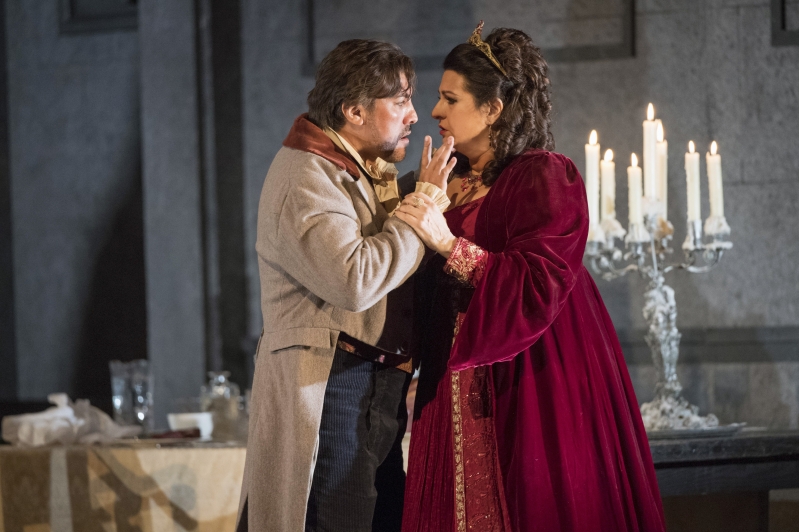Puccini’s Tosca is an opera brimming with passion, power and betrayal. It has, since its premiere in 1900, become one of the most performed operas in the world. As we head towards our production of Tosca this Autumn and with Welsh National Opera’s 80th anniversary in 2026, let’s look at this popular and dramatic opera’s history with WNO over the last 80 years.

Mary Elizabeth Williams (Tosca, 2013) Photography Robert Workman.
It wasn’t until 1955 at the Empire Theatre, Swansea that the Company performed its first production of Tosca, directed by Norman Jones, with a chorus comprising of professionals and amateur singers, and the Bournemouth Symphony Orchestra in the Pit. It took until 1970 for WNO to establish a dedicated Orchestra of professional musicians, and 1973for WNO Chorus to become a full-time professional ensemble.
Money was always tight in WNO’s early years and a make-do-and-mend approach to its opera productions continued well beyond the war years and rationing. However, a new production of Toscacame in 1958 with Harry Powell Lloyd at the helm, but reusing sets, scenery and some costumes from the previousproduction to save money.

Deborah Riedel Tosca and Dennis O'Neill Cavaradossi (Tosca, 2006) Photography Clive Barda
It seems that Tosca fell out of fashion at WNO in the 1960s and 70s. The next new production wasn’t performed until September 1980 at the New Theatre, Cardiff (by then WNO’s regular ‘home’ venue) and was directed by John Copley. This production was hugely popular and by the eighties, WNO was also taking its operas on tour regularly to Llandudno, Liverpool, Bristol, Oxford, Southampton, Birmingham and Plymouth.
By 1992 WNO introduced a brand-new Tosca by renowned Australian director, Michael Blakemore. Blakemore’s classic production was a resounding success and went on to be performed for the next 20 years but perhaps its most memorable Season was Spring 1998 when WNO Orchestra’s Percussion section was augmented by the purchase of three proper church bells for Act I’s Te Deum and the prelude of dawn in Act III. The three 245kg Tosca Bells, as they became known, were cast at the famous Whitechapel Bell Foundry, where Big Ben was cast in 1858. The story of WNO’s Tosca Bells became appropriately operatic, when the Bells were stolen on route to Liverpool. They were lost for a year, until a canny scrap merchant spotted the Welsh National Opera TOSCA inscription on each bell before they were melted down. The Tosca Bells were returned and remain in WNO Orchestra’s arsenal of instruments and are still wheeled out and rung at appropriate moments and loaned to other orchestras. WNO moved to its new home at Wales Millennium Centre in 2004 and Blakemore’s Tosca, with its wonderful bells, continued to be revived in the 00s and 10s. Its final outing was in 2018, with WNO Conductor Laureate Carlo Rizzi at the podium, Mary Elizabeth Willimas and Claire Rutter sharing the role of Tosca; Gwyn Hughes Jones as Cavaradossi and Mark S Doss as wicked Baron Scarpia.

Claire Rutter Tosca, Hector Sandoval Cavaradossi. (Tosca, 2018) Photography by Richard Hubert Smith.
Most operas reflect on the complexity of the human condition and behaviour: its frailties and the full spectrum of feelings and passions. Toscais no exception – a dramatic and emotional powder-keg – set to Puccini’s gorgeous music. Don’t miss this fresh, compelling and striking take on Tosca with Edward Dick directing and with a stellar cast, including Natalya Romaniw as Tosca.
Puccini’s Tosca opens WNO’s Autumn Season in Cardiff on the 14th September, then tours to Southampton, Llandudno and Bristol.



